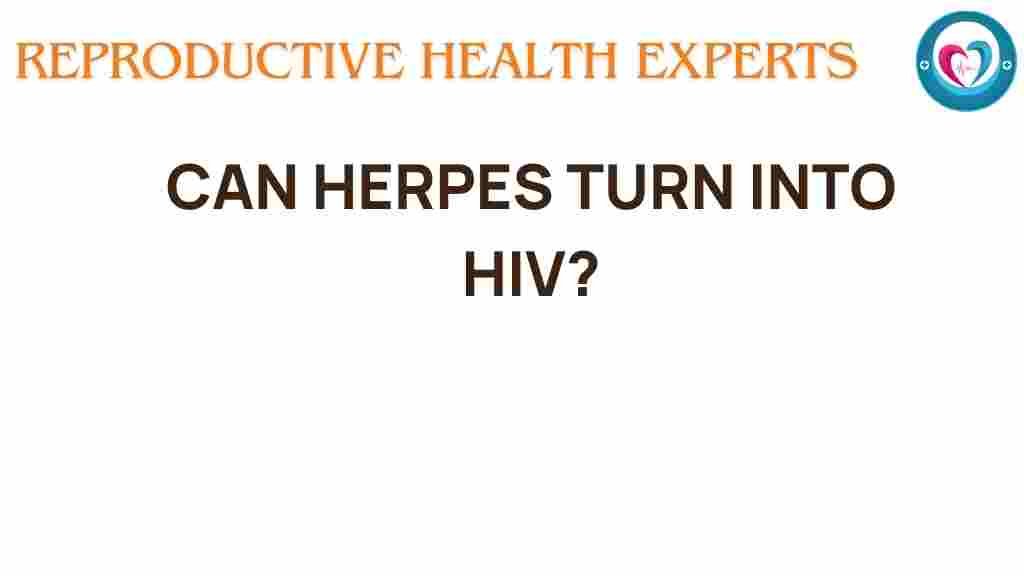The Surprising Connection: Can Herpes Lead to HIV?
When it comes to sexually transmitted infections (STIs), many individuals are aware of common culprits like chlamydia and gonorrhea, but fewer recognize the potential implications of herpes, particularly its connection to HIV. This article delves into the intricate relationship between herpes and HIV, exploring how one infection can influence the other, the health risks involved, and essential prevention strategies for sexually active individuals.
Understanding Herpes and HIV
Herpes is caused by the herpes simplex virus (HSV), which can manifest as oral herpes (HSV-1) or genital herpes (HSV-2). This viral infection is highly prevalent, affecting millions globally. On the other hand, HIV (Human Immunodeficiency Virus) attacks the immune system, potentially leading to AIDS (Acquired Immunodeficiency Syndrome) if untreated. Understanding these two infections is crucial for awareness and prevention.
The Health Risks of Co-Infection
One of the most critical aspects of understanding the connection between herpes and HIV is recognizing that individuals with herpes are at a higher risk of contracting HIV. Here’s how:
- Open Sores: Herpes causes painful sores and lesions, which can serve as entry points for the HIV virus during sexual contact.
- Immune System Impact: The presence of herpes can compromise the immune system, making it easier for HIV to establish an infection.
- Inflammation: Herpes can cause inflammation in the genital area, increasing susceptibility to other infections, including HIV.
Research has shown that individuals with genital herpes are two to three times more likely to contract HIV compared to those without herpes. This makes awareness of herpes essential for those who are sexually active.
Transmission of Herpes and HIV
Both herpes and HIV are transmitted through sexual contact. Understanding their transmission routes is vital for prevention:
- Herpes: Primarily spread through skin-to-skin contact with an infected area during vaginal, anal, or oral sex, even when sores are not visible.
- HIV: Transmitted through bodily fluids such as blood, semen, vaginal secretions, and breast milk. The most common routes are unprotected sex and sharing needles.
It’s important to note that herpes can be transmitted even when an infected person shows no visible symptoms, emphasizing the need for comprehensive sexual health education.
Steps to Prevent Herpes and HIV Transmission
Preventing the transmission of herpes and HIV requires a multi-faceted approach. Here are some effective strategies for sexually active individuals:
- Use Condoms: Consistent and correct use of condoms significantly reduces the risk of both herpes and HIV transmission.
- Limit Sexual Partners: Reducing the number of sexual partners can decrease the risk of exposure to STIs.
- Regular Testing: Get tested regularly for STIs, including herpes and HIV, especially if you have multiple partners.
- Open Communication: Discuss sexual health openly with partners, including STI status and prevention methods.
- Antiviral Medication: If you have herpes, taking antiviral medication can reduce outbreaks and lower the risk of transmitting the virus to partners.
By implementing these strategies, individuals can significantly lower their risk of contracting herpes and HIV.
Raising Awareness and Understanding Health Risks
Awareness is a powerful tool in the fight against STIs. Here are some ways to enhance awareness:
- Educational Programs: Engage in or support educational programs that inform individuals about STIs, their risks, and prevention methods.
- Community Outreach: Participate in community outreach initiatives that promote sexual health and the importance of regular STI testing.
- Support Groups: Join or create support groups for individuals living with herpes or HIV to share experiences and resources.
Understanding the health risks associated with herpes and its potential link to HIV is crucial for sexually active individuals. The more informed we are, the better we can protect ourselves and our partners.
Troubleshooting Tips for Managing Herpes and HIV Concerns
If you suspect that you may have herpes or are concerned about the risk of HIV, consider the following steps:
- Consult a Healthcare Provider: Seek professional advice for testing and treatment options.
- Keep Records: Maintain a record of any symptoms or outbreaks to discuss with your healthcare provider.
- Follow Treatment Plans: If diagnosed with herpes or HIV, adhere to prescribed treatment plans to manage your health effectively.
- Educate Yourself: Read reliable resources to better understand your condition and how to manage it.
By being proactive about your health, you can navigate the complexities of STIs with confidence and awareness.
Conclusion
The connection between herpes and HIV is a critical issue that affects millions of sexually active individuals. Understanding the health risks, transmission methods, and prevention strategies is essential for maintaining sexual health. By raising awareness and taking proactive measures, we can reduce the incidence of both herpes and HIV.
For more information on STIs and sexual health, visit this resource or check out our detailed guide on prevention strategies.
Remember, knowledge is power, and staying informed is the first step in protecting yourself and your partners from these infections.
This article is in the category Conditions and created by ReproductiveHealthExperts Team
